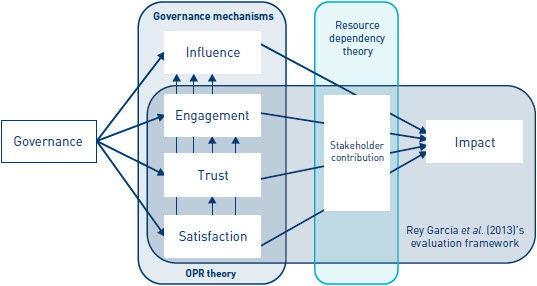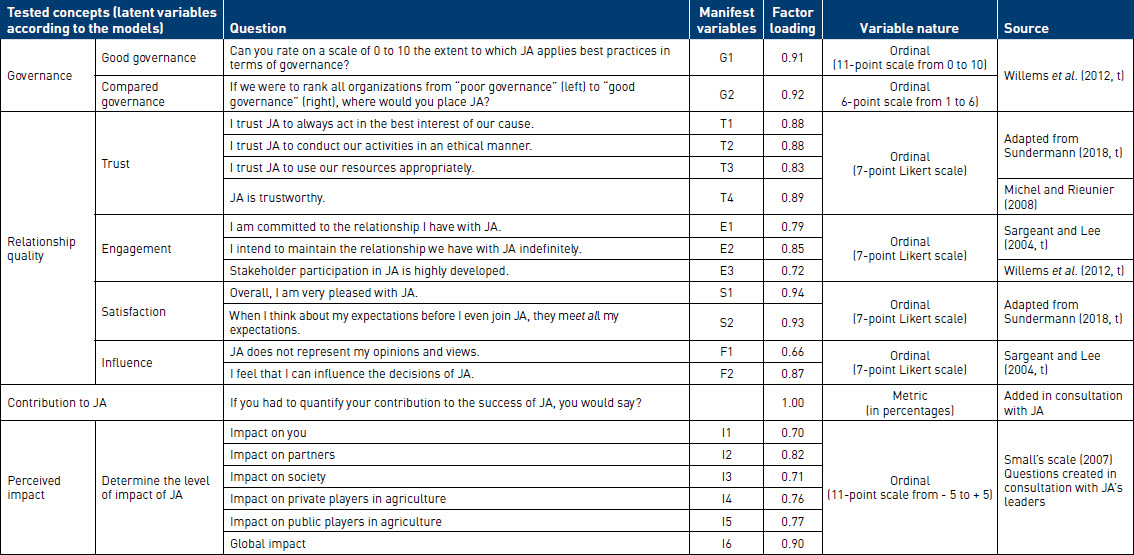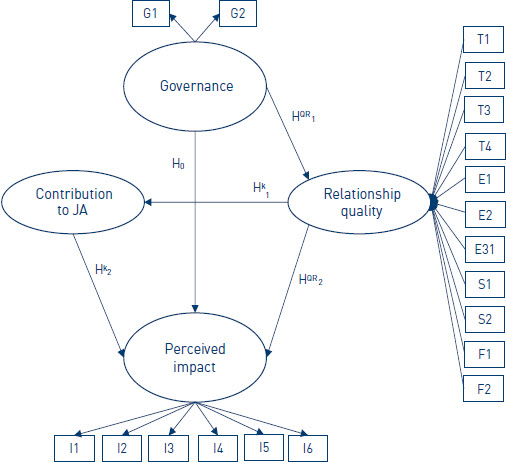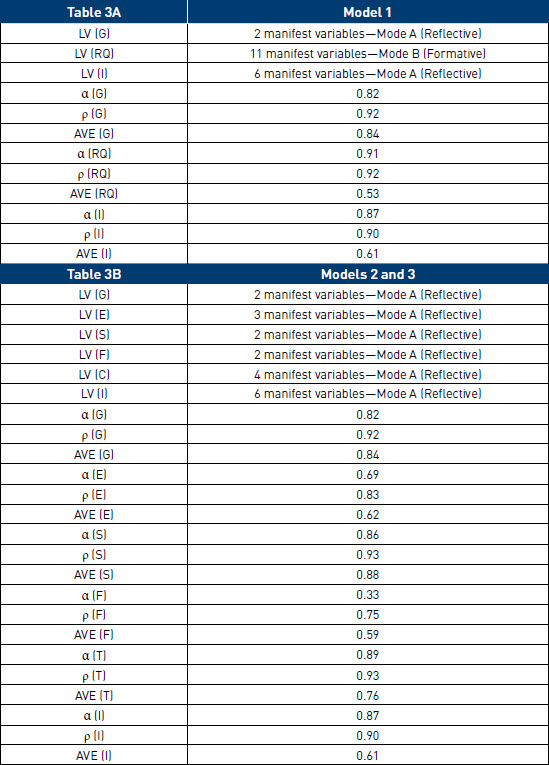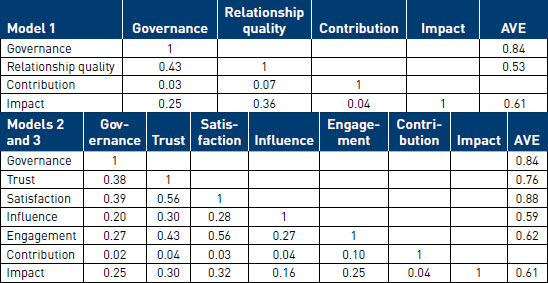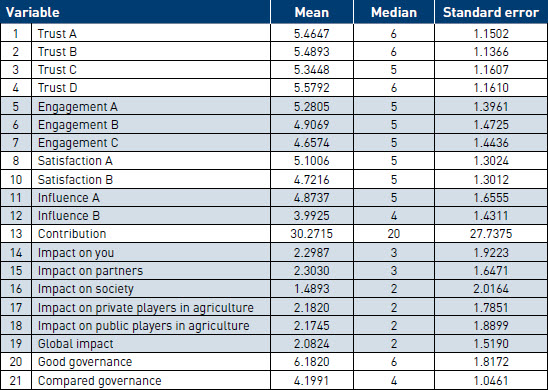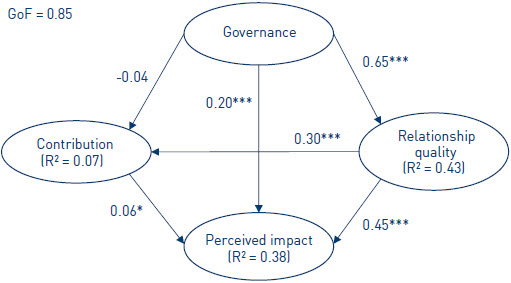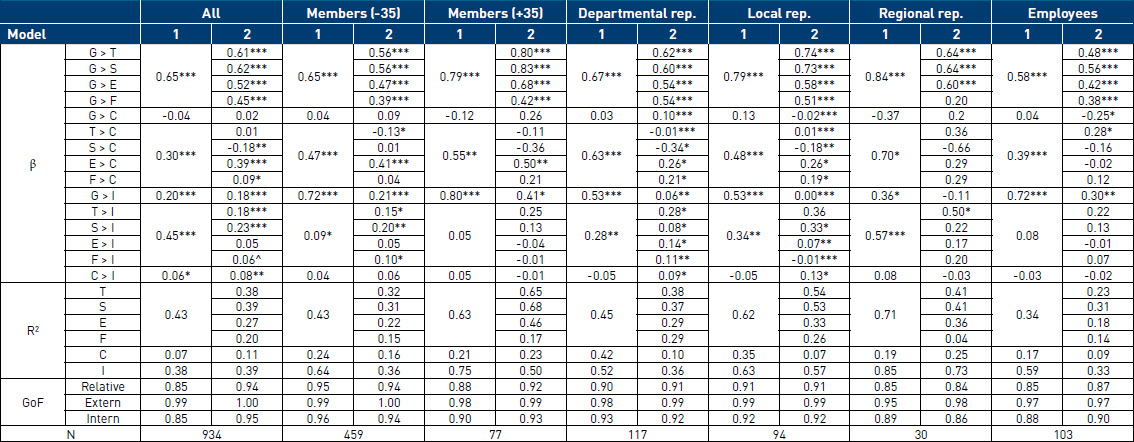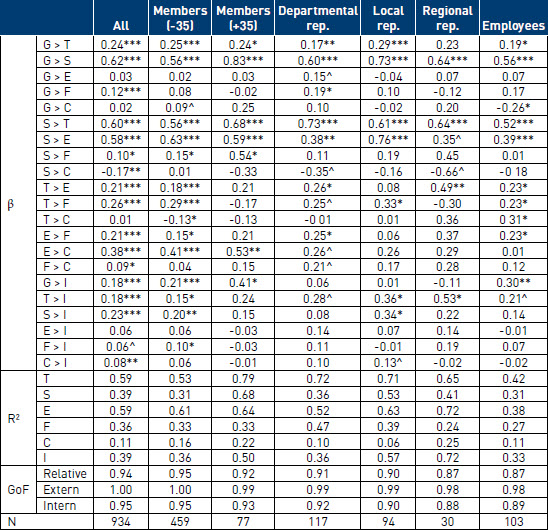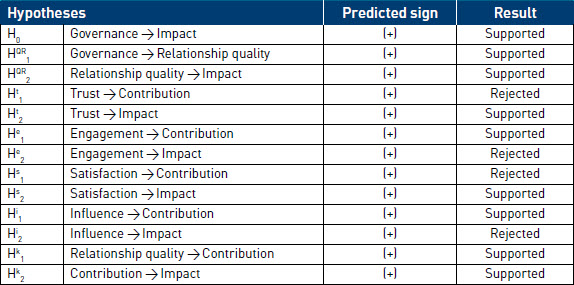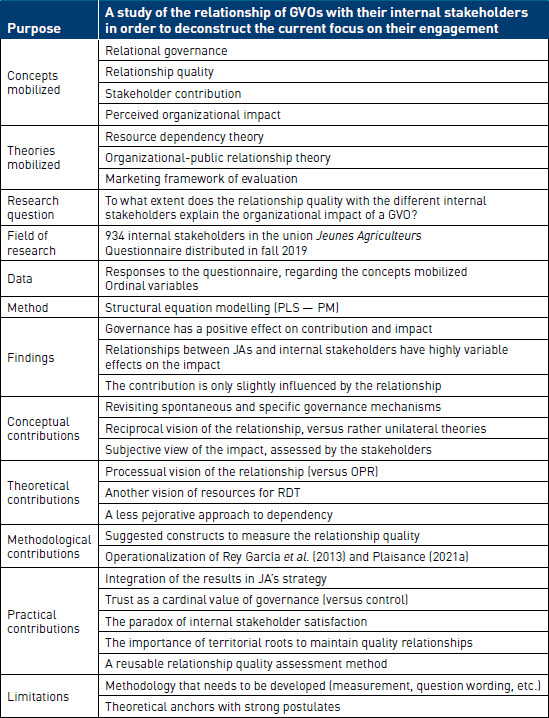Résumés
Abstract
The engagement of internal stakeholders in nonprofit organizations is a crucial resource for their functioning. The disengagement context finds a response through stakeholder governance and its spontaneous and specific mechanisms. These mechanisms are based on the quality of the relationship with stakeholders and its components (trust, satisfaction, influence, engagement) and play a role in understanding the success of grassroots volunteer organizations (GVOs). A study carried out within the “Young Farmers” union allows to verify the relevance of these mechanisms. The results contribute to the resource dependency theory, but also highlight the importance of a strategic differentiation based on the stakeholders.
Keywords:
- impact,
- governance,
- non-profit organization,
- relationship quality,
- stakeholders
Résumé
L’engagement des parties prenantes internes dans les OBNL est une ressource cruciale pour leur fonctionnement. Le contexte de désengagement trouve une réponse à travers la gouvernance des parties prenantes et ses mécanismes spontanés et spécifiques. Ces mécanismes reposent sur la qualité de la relation avec les parties prenantes et ses composantes (confiance, satisfaction, influence, engagement) et jouent un rôle dans la compréhension du succès organisationnel. L’étude est menée au sein du syndicat Jeunes Agriculteurs. Les résultats contribuent à la théorie de la dépendance des ressources, mais soulignent également l’importance d’une différenciation stratégique en fonction des parties prenantes.
Mots-clés :
- impact,
- gouvernance,
- organisation à but non lucratif,
- qualité de la relation,
- parties prenantes
Resumen
El compromiso de los stakeholders internos en las OSAL es un recurso crucial para su funcionamiento. El contexto de descompromiso encuentra una respuesta a través de la gobernanza y sus mecanismos espontáneos y específicos. Estos mecanismos se basan en la calidad de la relación con los stakeholders y sus componentes (confianza, satisfacción, influencia, compromiso) y juegan un papel en la comprensión del éxito de las OSAL. El estudio se realizó dentro del sindicato “Jóvenes Agricultores”. Los resultados contribuyen a la teoría de la dependencia a los recursos, pero también destacan la importancia de una diferenciación estratégica basada en los stakeholders.
Palabras clave:
- impacto,
- gobernanza,
- organización sin ánimo de lucro,
- calidad de la relación,
- stakeholders
Corps de l’article
Nonprofit organizations (NPOs) are facing a structural crisis in resources access: they are seeing strategic capital become scarce (Greiling, Harris, and Stanley, 2016). In this, the dependence of NPOs on their environment grows over time because they only have “limited autonomous resources” (Mano, 2010, p. 555).
All resources are changing. Donors and funders have increased their demands to support NPOs (Roslan, Arshad, and Mohd Pauzi, 2017). Volunteers and members are looking for less formal engagement (Plaisance, 2017). In short, NPOs have entered a vicious circle. They have to do more and more to find funds, means and people, and this is precisely consuming money, time and human resources. These changes are taking place when NPOs are already lacking resources to carry out management processes such as evaluation (e.g. Rey García, Álvarez González, and Bello Acebrón, 2013).
This specific context is even more important in grassroots volunteer organizations (GVOs), such as French “associations”. They heavily rely on the engagement of human resources to operate, such as volunteers, members and employees. For instance, only 12% of French GVOs have employees, and most of the time only one or two (Tchernonog and Prouteau, 2019). This is why GVOs seek to protect the relationships with their internal stakeholders.
Rewarding stakeholder engagement is one of the governance objectives (Ayuso et al., 2014; Chatelain-Ponroy, Eynaud, and Sponem, 2014). It manages stakeholder requirements and secures access to resources too. One way to reward stakeholder engagement is through organizational impact evaluation. This way, internal stakeholders see the end result of their engagement.
Two governance issues therefore seem essential in GVOs: on the one hand, strengthening relations with internal stakeholders and, on the other, improving the evaluation of organizational impact. In the case of these organizations, governance and impact are particularly linked (Plaisance, 2021a).
Moreover, the relational issue has already been brought to light by the literature. In the French context, scholars show that “control and incentive mechanisms are less relevant” in GVOs (Meier and Schier, 2008, p. 192) and encourage a relational approach to governance (Plaisance, 2021b). Spontaneous and specific mechanisms of governance have to be preferred, because they focus on the relationships with members, volunteers and employees (Meier and Schier, 2008). The tensions encountered by GVOs thus open a gap in the evaluation literature and provide the basis for the following research question:
Research question: To what extent does the relationship quality with the different internal stakeholders explain the organizational impact of a GVO?
After a literature review dedicated to relational governance and the impact of GVOs, the theoretical framework is presented to allow the formulation of hypotheses. The questionnaire sent to the internal stakeholders of the Young Farmers is then detailed. The results open up numerous managerial perspectives for both the union and GVOs in general.
Literature review and theoretical framework
Relational governance in GVOs
In the absence of owners, members are placed at the heart of GVOs, and they constitute the general assembly through their membership fees. Governance is often reduced to this engagement because members run for representative positions on governance bodies (the board of directors, for example). Nevertheless, this vision of control has been completed in GVOs.
Nonprofit governance indeed covers many other realities. Defined as “the way in which relationships between stakeholders are structured around a collective project” (Chatelain-Ponroy, Eynaud, and Sponem, 2014, p. 220), relational governance in GVOs promotes successful collaboration between “people who wish to contribute their time, assets, and idealism in order to achieve an objective in cooperation with other people” (Speckbacher, 2008, p. 298).
This vision echoes the concept of stakeholder, which definition is often based on influence: they are the individuals or collectives who have the capacity to influence the organization or who are themselves influenced or affected (Freeman, 1984). However, in the specific case of engagement organizations such as trade unions, complementary views can be highlighted.
Speckbacher (2008) points out that stakeholders are specific resource providers and value creators in line with the GVO’s objectives. Furthermore, their “claims on the return from the investment are incompletely specified by contracts and hence (at least partly) unprotected” (p. 302). This definition is particularly well adapted for GVOs’ internal stakeholders, due to the role of their engagement and the consequences they create.
In the specific case of unions, volunteers and members are often conflated into the same category, militants. Militants are the dues-paying people who give their time to the defended cause. Those who do not contribute are called sympathizers. Militants are then internally elected but also externally in representative bodies.
The dimensions of relational governance
The relational governance as envisaged by Speckbacher (2008), i.e. based on human resources, explains why internal stakeholder engagement is often seen by GVOs as their organizational goal. Defined as “the process of effectively eliciting stakeholder views on their relationship with the organization” (Friedman and Miles, 2006, p. 152), internal stakeholder engagement covers many realities: identification with and involvement in the organization, belief in its values, willingness to participate or to remain a member (Mowday, Porter, and Steers, 1982). Nevertheless, it is a “trust based-collaboration between individuals and/or social institutions with different objectives that can only be achieved together” (Andriof et al., 2002, p. 42). It is therefore only a fragment of relational governance.
Following Meier and Schier (2008), relational governance is indeed based on the relationship quality with stakeholders. The concept of relationship quality is developped in particular by the organization-public relationships (OPR) theory. Ledingham and Bruning (1998, p. 62) define the relationship quality as “the state which exists between an organization and its key publics, in which the actions of either can impact the economic, social, cultural or political well being of the other”. Four components provide insight on the relationship quality between the organization and its stakeholders: trust, engagement, satisfaction, and influence (which entails power and mutual control). Thus, GVOs are right to emphasize the strength of engagement; but the other components of the relationship should not be overlooked.
Trust, present in Andriof et al. (2002)’s definition of engagement, is defined as one party’s degree of assurance in the competence of another and especially in its “willingness to act in a fair, ethical, and predictable manner” (Nyhan and Marlowe, 1997, p. 616). Internal stakeholder satisfaction is a positive and favorable behavior towards the organization. It is defined by the “pleasure derived from fulfilling one’s wishes, expectations, or needs and is related to intentions to continue” to engage (Smith and Grove, 2017, p. 354). The influence is often used to define stakeholders and is indeed an essential component of relationship quality. It is defined as “the ability of one stakeholder to change the organizational state of another stakeholder” (Zerbib and Springuel, 2015, p. 10). Table 1 details the dimensions of these concepts.
The real goal of GVOs: linking organizational impact and relational governance
Some GVOs reduce their organizational goal to (internal) stakeholder engagement (Pajunen, 2006) because they are engagement-based organizations. In fact, according to Kelly and Lewis (2009, p. 375), “the goal for the non-profits is to make an impact on society”. The concept of impact is indeed the one chosen by scholars to address GVOs’ mission (Rawhouser, Cummings, and Newbert, 2019). Following Pace (1979), it is defined as the long-term effects on all stakeholders and non-stakeholders. Its scope is therefore broad, and its measurement can only be subjective, based on the provoked change. Here, in the case of a union, the main organizational impact is on its members (as beneficiaries), the union community, the sector or society. It is essentially intangible and exists only in the minds of the stakeholders: its measurement must be reasonable and based on them (Plaisance, 2021a). It can be positive (e.g., by defending members with political authorities, by animating the territory, by integrating professionals into a community) but also negative (e.g., by making the interests of a profession prevail over those of society or by mobilizing a large part of the personal life of the militants).
Table 1
A summary of the dimensions of the concepts in the study
The literature actually recognizes that the implementation of relational governance arrangements (especially in relation to internal stakeholders) favors the GVOs’ ability to have an impact on society (Renz and Andersson, 2013). For example, Rey García et al. (2013, p. 94) point out that “effective relationships with relevant stakeholders translate into improved organizational performance and social impact according to nonprofit’s mission and societal values”. In their proposal for an evaluation framework, the authors note the importance of an internal orientation. In other words, there is a link between the relationship quality with internal stakeholders and improved organizational impact. They finally echo the OPR theory by explaining that these relationships can be understood through stakeholder satisfaction, trust and engagement.
Theoretical framework and research question development
In order to meet the objective of this article, which is to demonstrate that the link between relational governance and the organizational impact goes beyond internal stakeholder engagement, two analytical frameworks intersect: the OPR theory and Rey García et al. (2013, p. 94)’s approach. These two frameworks are particularly complementary in order to understand GVOs’ impact (Plaisance, 2021a).
However, all this research is based on the vicious cycle of resources access. As highlighted by Mano (2010), GVOs are particularly dependent on their environment to obtain resources. More specifically, and notably in order to guarantee their governance, GVOs rely on their internal stakeholders. The theory associated with these issues is the resource dependence theory (RDT) (Pfeffer and Salancik, 1978), which is still recommended to study contemporary organizations (Hitt, Arregle, and Holmes Jr., 2021). In particular, it introduces the concept of stakeholder contribution, defined as the participation in the proper functioning of the organization by providing resources.
This theory has proven to be very relevant in the case of GVOs (Malatesta and Smith, 2014). It recognizes the importance of stakeholders, particularly because they share the organization’s goals (Seo, 2016). The necessary resources for the survival and functioning of the organization are available in the environment but their scarcity imposes arbitrations in the demands of the environment (Heimovics, Herman, and Coughlin, 1993). The organizational strategy is therefore to reduce its dependence on resources through these choices, while taking into account the complexity and instability of the environment. Getting closer to the stakeholders makes it possible to reduce these two particularities, by relying on differentiated strategies according to the targeted stakeholders. In the case of engagement-based GVOs, the strategy for reducing dependency is to seek loyalty and avoid the departure of key stakeholders, especially internal ones, as already seen. In other words, the relationship quality with them is a key issue.
The literature thus opens up an avenue of response to GVOs worried about disengagement: to manage dependence on internal stakeholders, the relationship quality with them can become a lever for action. However, RDT recognizes the diversity of stakeholders and the complexity of the environment while GVO relational governance seeks a balance between the mission, the different stakeholders, and this same complexity (Laville, Young, and Eynaud, 2015; Sharp, 2021). Thus, each category of internal stakeholders could be governed under different mechanisms to participate in the life of the organization. Therefore, exploring the possible distinctions that exist in the stakeholders’ contribution to GVOs’ impact is appropriate.
Figure 1 presents the concepts mobilized and their links according to the theories and frameworks presented in this section.
Figure 1
Presentation of the theoretical framework tested
Hypotheses development
The hypotheses arising from the research question seek to establish the relevance of relationship quality and its dimensions (as components of relational governance) in improving the impact of a GVO. In other words, the aim is to determine whether criteria other than engagement should be taken into account by GVOs in their management of their internal stakeholders.
The relationship with internal stakeholders is a governance issue, as seen above. Moreover, the four components of relationship quality are also governance mechanisms (cf. Meier and Schier, 2008). Governance in this study therefore constitutes a frame of reference. Engagement is indeed a governance mechanism and has a strong link with the accountability processes that are included in governance. Trust is often seen as a substitute for control, in particular because governance reduces information asymmetries and risks. Finally, relational governance aims by definition at the satisfaction of the stakeholders and manages their capacity to influence.
HQR1: Governance improves the relationship quality (and its components) between the organization and its stakeholders.
Governance is a control variable too. The link between governance and the achievement of the organizational goal has indeed already been studied by the literature (e.g. Arshad, Razak, and Bakar, 2014; Coombes et al., 2011) and the link between governance and impact is also emerging (Rey García, Álvarez González, and Bello Acebrón, 2013; Plaisance, 2021a).
H0: Governance positively affects the impact of the organization.
The following hypotheses focus on the effects of the components of relationship quality on contribution and impact. The literature agrees that these different components (taken independently of each other) contribute to the achievement of the organizational goal and to contribution, regardless of the stakeholders studied. Only a few of the most salient references are cited here, as this study focuses on each category of stakeholder and the effects of that behavior. In addition, the RDT allows for the direct establishment of the set of hypotheses for the link between relationship quality and stakeholder contribution.
The GVO literature has extensively studied the positive effect of trust on contribution and volunteerism (e.g. Bowman, 2004; De Cremer, Snyder, and Dewitte, 2001). Trust is a requirement for donations, volunteering and collaboration. It also helps to attract capital, including skills (Sargeant and Lee, 2004; Pirson and Malhotra, 2011). Trust enhances collaboration with stakeholders, particularly in terms of social and reputational value, thereby promoting stakeholder contribution:
Ht1: Internal stakeholder trust has a positive effect on their contribution.
Engagement also plays a role in increasing volunteering duration as well as resource provision (e.g. Moran and Mallia, 2015). It also participates in providing the needed skills to achieve the organizational mission (e.g. Beringer, Jonas, and Kock, 2013; Kang, 2016). Stakeholder engagement is often seen as an intangible resource necessary for the GVO accomplishment, as a component of organizational capacity.
He1: Internal stakeholder engagement has a positive effect on their contribution.
Stakeholder satisfaction leads to more funding (e.g. Waters, 2009) and promotes stakeholder loyalty. In this, the quality of internal processes can be amplified. Satisfaction creates a virtuous circle in which participation increases as much as contribution. Conversely, stakeholder dissatisfaction leads to disengagement and thus the withdrawal of resources.
Hs1: Internal stakeholder satisfaction has a positive effect on their contribution.
Stakeholder influence facilitates exchange and thus capital acquisition (e.g. Austin, Stevenson, and Wei-Skillern, 2006; Karaye, Ishak, and Che-Adam, 2014). Again, influence is often associated with organizational capacity: resource providers are de facto influential. The degree of influence can also change the willingness of resource providers to support GVOs.
Hi1: Internal stakeholder influence has a positive effect on their contribution.
The literature dedicated to GVOs has studied the effects of these components on the achievement of the organizational goal and on performance. Considering with Rawhouser et al. (2019) that a GVO performs well when its positive impact increases, the performance literature is applicable to the impact.
For example, the literature has already pointed to the role of individual stakeholder trust in the achievement of the organizational goal (e.g. Pirson and Malhotra, 2011; Krishnan, Martin, and Noorderhaven, 2006), because it makes relationships more effective. Trust improves organizational performance, either directly (by reducing agency costs, for example) or indirectly (the impact on opportunism or uncertainty). In short, trust creates value for members and beneficiaries.
Ht2: Internal stakeholder trust has a positive effect on the perceived organizational impact.
Employee engagement (Park et al., 2018) or volunteer engagement (Gross and Rottler, 2019; Misener et al., 2020) have already been studied for this same positive effect. Stakeholder engagement is also crucial in terms of organizational impact: for example, it helps to reduce negative environmental impact, create value for society, and ensure the sustainability and quality of actions (Willems, Jegers, and Faulk, 2016).
He2: Internal stakeholder engagement has a positive effect on the perceived organizational impact.
Insofar as one of the objectives of GVOs is to satisfy stakeholders, satisfaction becomes a direct determinant of impact, because satisfying a stakeholder means having the highest positive impact on it. Also, pragmatically, stakeholders have a power over the survival of GVOs that implies that they must be satisfied (e.g. Cnaan and Cascio, 1998; Willems, Jegers, and Faulk, 2016).
Hs2: Internal stakeholder satisfaction has a positive effect on the perceived organizational impact.
Stakeholder influence enables the organization to perform better and improves the organization’s social, societal and environmental initiatives (Polzin, 2010; Barnett, 2007). A stakeholder that exerts its influence on a GVO thus orients its strategy and intentions in its favor and increases the positive organizational impact on it.
Hi2: Internal stakeholder influence has a positive effect on the perceived organizational impact.
The previous hypotheses link the components of relationship quality with the impact and contribution of internal stakeholders. They can be extended to the overall concept of relationship quality. In addition, the framework proposed by Rey García et al. (2013) and its adaptation to the French case by Plaisance (2021a) provide evidence that stakeholder relationships play a role in improving the impact of GVOs.
Thus, the relationship quality between the organization and internal stakeholders positively affects their contribution (Hk1) and the perceived organizational impact (HQR2).
Finally, the stakeholder contribution is by definition at the service of the organizational goal and therefore its impact (as seen in the literature review). Furthermore, resources in general are clearly identified in the literature as determinants of organizational achievement (M. H. Hall et al., 2003; Nicholson, Newton, and McGregor-Lowndes, 2012). Thus:
Hk2: Internal stakeholder contribution positively affects organizational impact.
Methods and data
The case of the young farmers
The Young Farmers (“Jeunes Agriculteurs” in French, JA) has been a union of farmers under 35 years of age since 1957. The union has about 50,000 members and is not partisan. It plays a role of representation of the agricultural sector, in particular in the chambers of agriculture or in the Economic, Social and Environmental Council.
The JA’s objectives are numerous and focused primarily on their members, as well as on other young farmers. As a trade union, they ensure a mission of interests representation of this public (in particular within the authorities mentioned above). They also propose an analysis of the agricultural sector and formulate proposals and reflections on its evolutions. They accompany farmers who are setting up in business and have a role of animator of the rural territories.
JA is a GVO but also an intermediary body of engagement. The union therefore relies above all on its members to function. From a governance perspective, each territorial level (i.e., canton, department, region, country) has its own volunteer representatives. These representatives meet during annual events (the congress and the winter university) to ensure a continuous democratic life. The volunteer engagement of these representatives is therefore crucial.
In terms of the union life, beyond the governance and the interests representation, the members are actors in the local and territorial animation. Without individual engagement, the union at best relies on the same engaged persons or at worst loses its dynamism.
Like other French intermediary bodies, JA suffers from the context of disengagement, at least in its traditional forms (Plaisance, 2017). The leaders therefore wanted to conduct a reflection on their identity in order to counter the deterioration of the unions’ image. Many other observations were added: the engagement of young people is increasingly hard, membership is no longer as high as in the past, the renewal of representatives is becoming more and more complex, etc.
In this strategic process of redefining identity, the focus on governance and internal democracy was crucial. Internal stakeholder engagement was at the heart of the national directors’ thinking, because the survival of the union depends on it. However, as seen in the literature review, engagement is not the only criterion for making a GVO works.
In other words, the resources that internal stakeholders bring to the organization do not depend solely on their degree of engagement. In order to maximize this contribution and promote the success of the union, other criteria have been proposed, including satisfaction, trust and influence.
Survey and sample
When the union became aware of recent works linking governance, relationship quality and organizational impact (Plaisance, 2021a), the application of this conceptual framework seemed relevant to them. They therefore agreed to be the testing field for the previous theoretical framework with internal stakeholders. These are members; local elected representatives; departmental elected representatives; regional elected representatives; national elected representatives; employees; former members and former elected representatives.
The questionnaire was constructed from the literature (as indicated by Table 2): the only interventions of JA were requested to adapt the questions formulation to the specific case of JA. This methodological choice is in line with recent studies on the same subject (Willems, Jegers, and Faulk, 2016) and uses methods close to those of marketing (as highlighted by Rey García, Álvarez González, and Bello Acebrón, 2013). It was digitally sent to all of the above stakeholders in the second half of 2019. 934 returns were obtained: 459 members under 35, 117 departmental elected representatives, 103 employees, 94 local elected representatives, 77 members over 35 (therefore not eligible), 30 regional elected representatives, 24 former members, 18 former elected representatives and 12 national elected representatives.
Table 2
Questionnaire sent to internal stakeholders
Impact was defined for respondents as the effects that the organization has on the various individuals or groups mentioned and the scale was explained as: “from - 5 to - 1, the impact is negative; at 0, the organization has no impact and from + 1 to + 5, the impact is positive”. Governance was defined as “the decision-making arrangements, processes and structures that enable the achievement of objectives and protect values, and the distribution of power and responsibilities”, which respondents rate based on the reputation they have of JA (Radbourne, 2003). For comparative governance, each item is detailed: “1. Major shortcomings in the way the organization is governed; 2. Bad practice, but already some small initial achievements; 3. Close to average, but still below; 4. Close to average, but already above; 5. Good practices, but some room for improvement; 6. Best-practice example in the field” (Willems et al., 2012).
With regard to the contribution, the respondent is told that “it is a matter of understanding what you bring to JA. From - 5 to - 1, you slow down its functioning and its development. At 0, you bring nothing to JA. From +1 to +5, you contribute to its functioning and development”.
The results were analyzed using structural equation models (Figure 2), based on the PLS-PM method. Due to the threshold of this method, only internal stakeholder categories with a number of responses greater than or equal to 30 could be analyzed independently of the rest of the sample. There is some debate about the use of Likert scales, particularly in the context of structural equation models, because the associated variables are considered continuous. This debate is not ignored, but in the absence of a consensus on this subject, the use of Likert scales is acceptable when they have more than four points (Hair et al., 2014; Norman, 2010).
Governance is evaluated by its main actors, which explains the use of only two general questions. With regard to impact, the analysis of internal stakeholders is both a direct assessment (because JA’s goal is to serve the interests of its members) but also a subjective analysis of JA’s impact on other stakeholders, in line with the perception-based measurement methods already used in the literature (e.g. Collis et al., 2003).
Control of structural equation models
Several models were tested. Model 1 consists of three latent variables, governance (G), relationship quality (RQ) and impact (I), with contribution represented by only one variable. Relationship quality is here a formative variable. Models 2 and 3 substitute relationship quality with its four dimensions: trust (T), satisfaction (S), engagement (E) and influence (F). The four variables are therefore all reflective.
The different models are robust, insofar as the internal consistency do not have any weaknesses (Tables 3a and b): the Cronbach’s alphas and Dillon-Goldstein’s rhos are above 0.7. The reliability of the models is satisfactory in the light of factor loadings (Table 2). The convergent validiy is adequate given that the average variance extracted are above 0.5. Discriminant validity test are all validated (Table 4). The GoF (goodness of fit) are also of good quality, all above 0.84 (Tables 7 and 8). The multicollinearity was tested thanks to the variance inflation factors. For the model 1, only the regional representatives must attract the attention with a VIF higher than 3.3. In the case of models 2 and 3, the VIF are all between 1.04 and 3.12 if the same status is excluded. The Harman’s single-factor test is finally conducted in order to test the common method bias: the principal component analysis shows that the first unrotated factor captures 43% of the variance, which prevents any problem.
Figure 2
Graphical representation of the tested model 1
Results
The presentation of the results is followed by a commentary on the hypotheses.
Descriptive statistics and correlation matrix
According to Table 5, internal stakeholders primarily trust JA. Engagement and influence are next at equivalent levels. In all cases, the components of relationship quality lean toward a rather positive assessment. On average, these stakeholders believe they contribute 30% to JA’s success and they feel JA has a greater impact on themselves and on the local level. Their assessment of governance is quite good. The correlation matrix is unambiguous, as all variables are correlated with each other (Table 6). These strong correlations confirm the intertwining of governance, impact and relationship quality.
Tables 3 a and b
Models evaluation
Lecture: LV: latent variable; α: Cronbach’s alphas; ρ: Dillon-Goldstein’s rhos; AVE: average variance extracted; G: governance; RQ: relationship quality; I: impact; E: engagement; S: satisfaction; F: influence; T: trust.
Table 4
Discriminant validity tables for all internal stakeholders
N.B.: The other tables for the details of the stakeholders are not presented here but do not show any anomalies.
Table 5
Descriptive statistics
Table 6
Correlation matrix
Lecture: in bold: p < 0.001; **: p < 0.01; *: p < 0.05. The numbers of the variables can be found in the first column of Table 5.
Model 1 Results
When relationship quality is a full construct (Figure 3), its effect on impact is significant and positive (β = 0.45; p < 0.001). Governance is also a significant determinant of impact (β = 0.20; p < 0.001), while contributing to relationship quality (β = 0.65; p < 0.001). The contribution, only explained by relationship quality (β = 0.30; p < 0.001), has a negligible effect on impact (β = 0.06; p < 0.05). In the detail of stakeholders (Table 7), members over 35 years old (β = 0.80; p < 0.001; R² = 0.75) and employees (β = 0.72; p < 0.001; R² = 0.59) stand out by enshrining governance as the only determinant of impact.
Figure 3
Graphical representation of the results of model 1
Model 2 Results
By distinguishing the different dimensions of relationship quality, Model 2 confirms that all four are governance mechanisms, in view of the coefficients relating them to governance as well as the high R²s (Figure 4). Governance also directly contributes to impact (β = 0.18; p < 0.001). Next, engagement (β = 0.39; p < 0.001) and influence (β = 0.09; p < 0.05) are determinants of contribution. In contrast, satisfaction slows contribution (β = - 0.18; p < 0.01). The effect of contribution on impact is small (β = 0.08; p < 0.01) and three mechanisms are significant: trust (β = 0.18; p < 0.001), satisfaction (β = 0.23; p < 0.001), and influence (β = 0.06; p < 0.10). Among the results that differed from the general case (but also from Model 1), adherents under 35 years of age saw their trust affect their contribution (β = - 0.13; p < 0.05). The same result can be noted for departmental and local elected representatives (respectively, β = - 0.34; p < 0.05 and β = - 0.18; p < 0.01); for whom, moreover, satisfaction improves the impact (respectively, β = 0.08; p < 0.05 and β = 0.33; p < 0.05).
Figure 4
Graphical representation of the results of model 2
Table 7
Results of the first two structural equation models
Lecture: ***: p < 0.001; **: p < 0.01; *: p < 0,05; ^: p < 0,10. β: OLS normalized coefficient; G: governance; E: engagement; S: satisfaction; F: influence; T: trust; C: contributions; I: impact; rep.: representatives.
Model 3 Results
Model 3 (Table 8) builds on the four dimensions of relationship quality while adding links between them. Following Rey García et al. (2013) and Plaisance (2021a), satisfaction is now tested as a determinant of the other three dimensions, trust is tested as a determinant of the last two, and engagement is a determinant of influence. Compared to Model 2, governance loses its positive effects on engagement. These effects are now assumed by satisfaction and trust for engagement; and by trust, engagement and satisfaction for influence. Trust is a determinant of impact for local elected representatives (β = 0.36; p < 0.05) as well as for employees (β = 0.21; p < 0.10).
Table 8
Results of the third structural equation model
Lecture: ***: p < 0.001; **: p < 0.01; *: p < 0,05; ^: p < 0,10. β: OLS normalized coefficient; G: governance; E: engagement; S: satisfaction; F: influence; T: trust; C: contributions; I: impact; rep.: representatives.
Hypotheses statement
A hypothesis is supported if it is validated for the entire sample (Table 9). An analysis of the different categories of internal stakeholders must then be conducted. Model 1 validates all the hypotheses that include the relationship quality.
On the other hand, its components have more disparate effects, leading, for example, to the rejection of the positive effect of trust and satisfaction of internal stakeholders on their contribution. Above all, their engagement and influence do not explain the organizational impact, confirming the importance of not focusing on this first concept.
In sum, the results indicate that trust and satisfaction of internal stakeholders improves JA’s impact, while engagement and influence instead have an effect on contribution. However, this second effect is more modest, given the R² of contribution and the small coefficient linking it to impact.
Table 9
Hypotheses statement
Discussion
The analysis by stakeholder category helps to refine the contributions of this study.
A stakeholder analysis of the results: answering the research question
If the hypotheses were analyzed through the filter of the entire sample of internal stakeholders, the results show that they have differentiated behaviors.
A prominent place for eligible members. Among members under 35, only engagement increases their contribution to the organization. More surprisingly, trust reduces their contribution. Among JA, there is indeed a strong culture of control and questioning, which is relatively classic in interest representation organizations. JA rather needs the engagement of its members to act, convince and develop.
If the relationship quality explains the impact, governance plays a more important role. The members are the main actors of the internal democratic life and a good governance allows them to be at the heart of the project defended by JA. The fundamentals of non-profit governance therefore remain relevant (Labie, 2005).
The particularity of members over 35 years old is their non-eligibility. They are nonetheless engaged, since this is the way to promote their contribution to the organization. In contrast, only governance explains the impact for them. Governance as a guarantee of member participation is even more important when they can no longer be elected. In addition, according to Model 3, satisfaction is the basis of the relationship, while for members under 35, the relationship is a process based on all dimensions.
The elected representatives are to be understood according to their territorial level. Local and departmental elected representatives have the same results as internal stakeholders regarding contribution (given that the coefficients relating trust to contribution are close to zero). In contrast, among departmental representatives, governance increases the contribution. The departmental level is the most relevant for JA’s actions and the relations with private and public agricultural actors. In this, good governance gives them all the latitude to act and thus contribute to the JA’s success.
For all the elected representatives studied, the relationship quality has a greater effect on the contribution than on the impact (in contrast to all internal stakeholders). This result is not very surprising: belonging to the management of an organization modifies the relationship with its impact.
However, in detail, the mechanisms at work to explain impact are different. Thus, at the local level, only satisfaction plays a significant role, for reasons similar to members. At the departmental level, satisfaction loses its place and trust helps explaining the impact, along with engagement and influence. As the optimal level, departmental leaders build strong and comprehensive relationships with the organization to maximize its impact.
Employee trust first. The first paradox to note is that governance deteriorates the contribution of employees. Several hypotheses can be advanced. Quality governance would be synonymous with maximizing the contribution of voluntary, non-salaried internal stakeholders; if we retain the democratic vision of governance focused on its members and volunteers. Another explanation would be an open and inclusive vision of governance: being strongly involved and mobilized on these issues, employees would see their contribution to the smooth running of JA’s daily life affected.
Given that trust improves employee contribution, it can be assumed that governance seen as a control process does not correspond to the culture of JA employees. According to Model 3, their trust contributes to the impact. In sum, the effect of governance on impact remains very high, especially when it is based on trust (Charreaux, 1998).
The results show the role of relationship quality in improving organizational contribution and impact. However, the four characteristics defining this relationship quality do not have the same effects on the last two concepts. Moreover, depending on the internal stakeholder analyzed, nuances must be made.
Thus, to answer the research question, the relationship quality with the stakeholders is indeed an explanatory criterion for the success of an GVO. However, differentiating the stakeholder categories and the components of the relationship is necessary to analyze their positive effects on organizational success.
Contributions to both JA and research
Contributions have been made to the concepts mobilized in this study. First, relational governance is indeed a key issue for GVOs that are member- and volunteer-based. For example, the positive effect of governance on the impact for members and employees is marked by very high coefficients. The nonprofit literature had already highlighted the strength of trust (Hyder, 2016) and satisfaction (Cnaan and Cascio, 1998; Willems, Jegers, and Faulk, 2016) internally. However, the works on nonprofit governance proposed different mechanisms than those obtained. For members, they did emphasize trust (Meier and Schier, 2008) but not satisfaction. For employees and volunteers, only their adhesion and engagement were emphasized (Busson-Villa and Gallopel-Morvan, 2012). Satisfaction was reserved for beneficiaries (Meier and Schier, 2008). The results therefore revisit the spontaneous and specific mechanisms of governance by emphasizing that the components of relationship quality are all governance mechanisms. They potentially concern all stakeholders and this relationship is reciprocal (following Hahn, 2015).
Secondly, relationship quality and its components are more than resources for GVOs. They are indeed intangible assets, which can be qualified as social, and they directly participate in improving organizational impact. The hypotheses from the literature and RDT focused on the relationship quality as a mean to attract resources. In fact, the results rather confirm the idea of Rey García et al. (2013): efficient relationships are in themselves a determinant of the impact. Speckbacher’s (2008) definition of stakeholders thus finds a strong echo: their contributed resources are indeed specific and their participation in value creation is indeed direct. In other words, the status of the relationship quality with stakeholders is changing: it is no longer an obligatory step in order to succeed but an end in itself.
Thirdly, the concept of organizational impact used in this study is clarified in comparison with the literature. More than subjective, it is emotional and relational, which implies a different evaluation (e.g. Trochim and Urban, 2021). In line with Plaisance (2021a), the concept is approached in a reasonable manner for organizations that do not yet have the means to implement complex and costly measurement systems. This emotional view had been adopted by the research dedicated to philanthropy and now deserves to be replicated for all GVOs.
Theoretical contributions are linked to the mobilized frameworks. This work is one of the first tests of the model proposed by Rey García et al. (2013). The logical process they proposed is confirmed: there is a contribution of satisfaction to the other three components of relationship quality, of trust to engagement and influence, and finally of engagement to the latter. This processual vision thus revisits the OPR theory, which defines relationship quality as the juxtaposition of the four components.
In addition, the findings show that the RDT approach is partially applicable. First, the scarcity of resources emphasized by the theory points to a rather material view of capital. Trust and satisfaction, the driving forces for GVOs, are fragile but endless resources. Obtaining the trust of one stakeholder will not deprive another organization of obtaining it as well. The resource approach should therefore be split between limited resources and limitless resources. On the other hand, the RDT prescript the reduction of the dependency to resources providers. The findings rather invite to convert this dependence into mutual and reciprocal dependency as long as there is a consensus around the defended values and the mission. This type of codependency can reduce the environement unstability, in particular because trust reduces uncertainty and provides a more serene view of stakeholder relationships.
The methodological contributions are of several kinds. First, the goodness of fit of the models as well as the other checks confirm the relevance not only of the structural equation models but also of the proposed constructs. The constructs for each concept and for the relationship quality can constitute reusable indicators. The same is true for the impact construct, which covers a large part of reality (on the responding stakeholder, on the local ecosystem, on society in general, on the stakeholders and finally on the global). A measure that combines a rather objective direct assessment with perception has proven to be relevant and effective. Finally, this study proposed a methodological operationalization of Rey García et al. (2013) and Plaisance (2021a) in the specific case of a union. In addition, it addresses the measurement problems found in works that have adopted the same approach.
The practitioner and societal contributions address both the specific case of JA and GVOs and NPOs in general. The results of the internal stakeholder study have challenged the conventional wisdom around their engagement. JA was able to move from a strategic vision based on internal engagement and the satisfaction of resource providers and members. The development of a trusting environment became one of their strategic axes, especially during their internal debates during which JA redefined their identity. More generally, the results allowed JA to examine the internal process of value creation, leading them to differentiate their strategies according to the stakeholders, especially during the debates conducted during the annual events. A stakeholder prioritization process was thus proposed (following M. Hall, Millo, and Barman, 2015). Finally, JA’s identity tends towards a benevolent and more peaceful vision of relations, based on co-construction with stakeholders and recognition of the role of internal actors.
The role of trust in the survival of GVOs has been repeatedly emphasized in the literature (e.g., recently, Hyndman, Liguori, and McKillop, 2021) and also in relation to the establishment and maintenance of social cohesiveness. Moreover, lack of trust can not only damage the charity sector (having negative impacts on public perceptions and donor giving. This study emphasizes more generally the need for GVOs to move away from a focus on internal engagement to a more generalized view of the relationship with their employees, members, and volunteers. The obtained results concept by concept are specific to JA, and an analysis specific to each GVO deserves to be conducted. However, they reveal principles that are applicable to all GVOs, such as the importance of the relationship quality with internal stakeholders.
In addition, the results push GVOs away from an approach based on the contribution of their internal stakeholders. Here, it is explained by engagement and influence, while satisfaction has a negative effect. Since internal stakeholders are inside the organization, their engagement is materialized in the form of resources contributed that can be directly mobilized (Moran and Mallia, 2015) or is integrated into the broad notion of human capital, crucial in GVOs (García-Mainar and Marcuello, 2007) participation in nonprofit organizations. Conversely, too much satisfaction would prove to be counterproductive, in the idea of a self-providing organization: in short, if internal stakeholders got what they expected (here, from JA), a form of apathy is likely to set in. This may be the paradox of satisfaction that the literature has little explored yet (Slimane and Chaney, 2011).
The obtained findings propose to GVOs recommendations for practice. First, although standard setters tend to prescribe good governance practices in terms of discipline and control (Plaisance, 2021b), the relational component of governance should not be neglected. Both formally and informally, a trusting dialogue with stakeholders allows for a virtuous circle of success. Second, in general, engaging internal stakeholders is not a problem for international NGOs, GVOs and NPOs, thanks to shared values. The results show that other emotions come into play and it seems more difficult for these large organizations to improve mutual trust, satisfaction and influence at all scales. Territorial anchors thus seem extremely important, as informal and digital engagement finds its limits here. Finally, this study calls on GVOs to be wary of prescriptions and general models that would multiply good practices. Each organization is surrounded by a specific ecosystem of stakeholders with their own reactions. The results obtained here can therefore be an inspiration for NPOs, but the method of stakeholder analysis is above all useful to their leaders.
Conclusion
Internal stakeholder engagement is cardinal in GVOs: it has become a condition of survival. However, stakeholder governance, as a process involved in value creation (Meier and Schier, 2008), emphasizes the full relationship with stakeholders to understand the GVOs’ goals and highlights other spontaneous and specific mechanisms.
Using a combination of RDT, OPR theory, and Rey García et al. (2013)’s evaluation framework, the study conducted within the Young Farmers union highlighted that these stakeholders have other attributes that do contribute to organizational goal, i.e., impact on society and on members.
The issues discussed in the introduction are thus answered: internal stakeholder engagement is not the relevant attribute to expand JA’s goals. Turning to their trust and satisfaction, or even to a holistic view of relationship quality, appears preferable. Furthermore, as Meier and Schier (2008) point out, spontaneous and specific governance mechanisms (those geared towards stakeholder relations) have proven to be successful.
Although the results obtained are specific to JA, they allow us to revisit these mechanisms by rejecting the presumption that each stakeholder is associated with an attribute (e.g., trust with members). Thus, they complement the list of classical stakeholder prioritization criteria (e.g., salience) with four potential attributes. By considering GVO governance as the means of distributing the value created (Meier and Schier, 2008), these attributes then become four keys to the distribution of value within GVOs. Table 10 provides a summary of the research.
In addition to the contributions outlined above, this article offers a response to the literature that has called for more research on stakeholder management in GVOs (Kourula and Laasonen, 2010), especially those with multiple missions including advocacy (Beaton, MacIndoe, and Wang, 2021). The results are indeed generalizable to all trade unions, national or international.
However, there are methodological limitations. This study explored the notion of relationship quality through 11 or 13 questions, but governance was reduced to two variables. Regarding impact, the objective of this study mixed personal evaluation and perception. However, the questions were straightforward, addressing several types or scales of impact. They don’t include manifest variables that would then form the impact. The development of other indicators is one of the methodological avenues to be considered. The contribution variable could be broken down using the same method. The sending of online questionnaires has well-known limitations but remains consistent with the hypothetical-deductive approach chosen. In addition, it was impossible to test the framework for former members and elected representatives because of the small subsample.
Table 10
Summary of the research
The theoretical frameworks used are also specific. They take a contingent and rather normative approach to organizations: stakeholder engagement is reduced to its purely positive side and it is postulated that the goal of GVOs is rather to have a positive impact on society. Coupling these theoretical frameworks with critical and conflicting perspectives (e.g. Trochim and Urban, 2021) would be useful. Furthermore, only one part (organizational impact) of Rey García et al. (2013)’s theoretical framework is tested, so the full model should be retained in the future.
Finally, this study and its method could be carried out in other types of GVOs, in order to deepen its interest in the strategic reflection of this sector. The context is indeed important in this study and, even if adequate tests have been carried out, reproducing this work in several organizations would now be necessary. Determining which drivers explain the strong variability of the effects of relationship quality according to the stakeholders is a research avenue too.
Parties annexes
Acknowledgements
The author would like to thank Pascal Barneto and Elisabeth Bertin, his supervisors, for their support; and all the team of Jeunes Agriculteurs, their leaders, their representatives and their employees, without forgetting all the members who warmly welcomed him within their events as well as at the headquarters.
Biographical note
Guillaume Plaisance: Ph.D. in management sciences at the University of Bordeaux and graduate of Sciences Po Bordeaux and the IAE of Bordeaux, Guillaume Plaisance was the recipient of a ministerial doctoral scholarship and was a board member of the doctoral school Enterprise, Economy, Society (ED 42). Lecturer at the University and IAE of Bordeaux, attached to the Research Institute in Management Science, his studies on non-profit governance, performance and impact, and stakeholders and ethics have for instance been published in Voluntas, the International Journal of Public Administration and the Annals of Public and Cooperative Economics.
Bibliography
- Andriof, Jörg; Waddock, Sandra; Husted, Bryan; Rahman, Sandra (2002). Unfolding Stakeholder Thinking—Theory, Responsibility and Engagement, London: Routledge, 320 p.
- Arshad, Roshayani; Razak, Hamizah Abdul; Bakar, Noorbijan Abu (2014). “Assessing the Self-Governance and Value Creation in Non-Profit Organisations”, Procedia—Social and Behavioral Sciences, Vol. 145, p. 286-293.
- Austin, James; Stevenson, Howard; Wei-Skillern, Jane (2006). “Social and Commercial Entrepreneurship: Same, Different, or Both?”, Entrepreneurship Theory and Practice, Vol. 30, N° 1, p. 1-22.
- Ayuso, Silvia; Rodríguez, Miguel A.; García-Castro, Roberto; Ariño, Miguel A. (2014). “Maximizing Stakeholders’ Interests: An Empirical Analysis of the Stakeholder Approach to Corporate Governance”, Business & Society, Vol. 53, N° 3, p. 414-439.
- Barnett, Michael L. (2007). “Stakeholder Influence Capacity and the Variability of Financial Returns to Corporate Social Responsibility”, Academy of Management Review, Vol. 32, N° 3, p. 794-816.
- Beaton, Erynn; MacIndoe, Heather; Wang, Tian (2021). “Combining Nonprofit Service and Advocacy: Organizational Structures and Hybridity”, Nonprofit and Voluntary Sector Quarterly, Vol. 50, N° 2, p. 372-396.
- Beringer, Claus; Jonas, Daniel; Kock, Alexander (2013). “Behavior of Internal Stakeholders in Project Portfolio Management and Its Impact on Success”, International Journal of Project Management, Vol. 31, N° 6, p. 830-846.
- Bowman, Woods (2004). “Confidence in Charitable Institutions and Volunteering”, Nonprofit and Voluntary Sector Quarterly, Vol. 33, N° 2, p. 247-270.
- Busson-Villa, Florence; Gallopel-Morvan, Karine (2012). “La normalisation des associations: quelle efficacité pour rassurer les parties prenantes?”, Management & Avenir, Vol. 54, N° 4, p. 168-190.
- Charreaux, Gérard (1998). “Le Rôle de La Confiance Dans Le Système de Gouvernance Des Entreprises”, Economies et Sociétés, Vol. 32, p. 47-66.
- Chatelain-Ponroy, Stéphanie; Eynaud, Philippe; Sponem, Samuel (2014). “La gouvernance associative: entre diversité et normalisation” dans A. Burlaud, Comptabilité, Finance et Politique. De la pratique à la théorie: l’art de la conceptualisation, ECS, p. 219-226.
- Cnaan, Ram A.; Cascio, Toni A. (1998). “Performance and Commitment: Issues in Management of Volunteers in Human Service Organizations”, Journal of Social Service Research, Vol. 24, N° 3-4, p. 1-37.
- Collis, Bryan; Lacey, Marion; O’Hagan, Siobhan; Shah, R.; Wainwright, S.; Wilding, K.; Worthy, A. (2003). “Measuring Impact: Case Studies of Small and Medium-Sized Voluntary Organisations”, UK Voluntary Sector Research Group, London: National Council for Voluntary Organisations.
- Coombes, Susan M. T.; Morris, Michael H.; Allen, Jeffrey A.; Webb, Justin W. (2011). “Behavioural Orientations of Non-Profit Boards as a Factor in Entrepreneurial Performance: Does Governance Matter?”, Journal of Management Studies, Vol. 48, N° 4, p. 829-856.
- De Cremer, David; Snyder, Mark; Dewitte, Siegfried (2001). “‘The Less I Trust, the Less I Contribute (or Not)’ The Effects of Trust, Accountability and Self-Monitoring in Social Dilemmas”, European Journal of Social Psychology, Vol. 31, N° 1, p. 93-107.
- Freeman, Edward (1984). Strategic Management: A Stakeholder Approach, Cambridge university press.
- Friedman, Andrew; Miles, Samantha (2006). Stakeholders: Theory and Practice, Oxford University Press on Demand.
- García-Mainar, Inmaculada; Marcuello, Carmen (2007). “Members, Volunteers, and Donors in Nonprofit Organizations in Spain”, Nonprofit and Voluntary Sector Quarterly, Vol. 36, N° 1, p. 100-120.
- Greiling, Dorothea; Harris, Michael; Stanley, Rodney (2016). “Accountability in Non-Profit Organizations Introduction to the Symposium”, Public Administration Quarterly, Vol. 40, N° 2, p. 212-219.
- Gross, Hellen P; Rottler, Maren (2019). “Nonprofits’ Internal Marketing and Its Influence on Volunteers’ Experiences and Behavior: A Multiple Mediation Analysis”, Nonprofit and Voluntary Sector Quarterly, Vol. 48, N° 2, p. 388-416.
- Hahn, Tobias (2015). “Reciprocal Stakeholder Behavior: A Motive-Based Approach to the Implementation of Normative Stakeholder Demands”, Business & Society, Vol. 54, N° 1, p. 9-51.
- Hair, Joseph; Black, William; Babin, Barry; Anderson, Rolph (2014). Multivariate Data Analysis. 7th ed, Harlow: Pearson.
- Hall, Matthew; Millo, Yuval; Barman, Emily (2015). “Who and What Really Counts? Stakeholder Prioritization and Accounting for Social Value”, Journal of Management Studies, Vol. 52, N° 7, p. 907-934.
- Hall, Michael H; Andrukow, Alison; Barr, Cathy; Brock, Kathy; Wit, Margaret de; Embuldeniya, Don (2003). The Capacity to Serve: A Qualitative Study of the Challenges Facing Canada’s Nonprofit and Voluntary Organizations, Toronto: Canadian Centre for Philanthropy.
- Heimovics, Richard D.; Herman, Robert D.; Coughlin, Carole L. Jurkiewicz (1993). “Executive Leadership and Resource Dependence in Nonprofit Organizations: A Frame Analysis”, Public Administration Review, Vol. 53, N° 5, p. 419-427.
- Hitt, Michael A.; Arregle, Jean-Luc; Holmes Jr., R. Michael (2021). “Strategic Management Theory in a Post-Pandemic and Non-Ergodic World”, Journal of Management Studies, Vol. 58, N° 1, p. 259-264.
- Hyder, Akmal S (2016). “Market Orientation in Non-Profit Organization”, World Review of Entrepreneurship, Management and Sustainable Development, Vol. 12, N° 4, p. 414-432.
- Hyndman, Noel; Liguori, Mariannuziata; McKillop, Donal (2021). “Many Stones Can Form an Arch, Singly None: (Re-)Establishing Trust in Charities”, Financial Accountability & Management, Vol. 37, N° 4, p. 385-398.
- Kang, Minjeong (2016). “Moderating Effects of Identification on Volunteer Engagement: An Exploratory Study of a Faith-Based Charity Organization”, Journal of Communication Management, Vol. 20, N° 2, p. 102-117.
- Karaye, Yusuf Ibrahim; Ishak, Zuaini; Che-Adam, Noriah (2014). “The Mediating Effect of Stakeholder Influence Capacity on the Relationship between Corporate Social Responsibility and Corporate Financial Performance”, Procedia—Social and Behavioral Sciences, Vol. 164, p. 528-534.
- Kelly, Deborah; Lewis, Alfred (2009). “Human Service Sector Nonprofit Organization’s Social Impact”, Business Strategy Series, Vol. 10, N° 6, p. 374-382.
- Kourula, Arno; Laasonen, Salla (2010). “Nongovernmental Organizations in Business and Society, Management, and International Business Research: Review and Implications From 1998 to 2007”, Business & Society, Vol. 49, N° 1, p. 35-67.
- Krishnan, Rekha; Martin, Xavier; Noorderhaven, Niels (2006). “When Does Trust Matter to Alliance Performance?” Academy of Management Journal, Vol. 49, N° 5, p. 894-917.
- Labie, Marc (2005). “Chapitre 4. Économie sociale, non-profit, tiers secteur: à la recherche d’un cadre de gouvernance adéquat” dans A. Finet, Gouvernement d’entreprise, De Boeck Supérieur, p. 101.
- Laville, Jean-Louis; Young, Dennis R.; Eynaud, Philippe (2015). Civil Society, the Third Sector and Social Enterprise: Governance and Democracy, New York: Routledge.
- Ledingham, John; Bruning, Stephen (1998). “Relationship Management in Public Relations: Dimensions of an Organization-Public Relationship”, Public Relations Review, Vol. 24, N° 1, p. 55-65.
- Malatesta, Deanna; Smith, Craig R. (2014). “Lessons from Resource Dependence Theory for Contemporary Public and Nonprofit Management”, Public Administration Review, Vol. 74, N° 1, p. 14-25.
- Mano, Rita S. (2010). “Marketing and Performance Evaluations in Non-profit Services: ‘Missed’ Targeting in Communicating Stakeholders’ Expectations”, International Journal of Productivity and Performance Management, Vol. 59, N° 6, p. 555-570.
- Meier, Olivier; Schier, Guillaume (2008). “Quelles théories et principes d’actions en matière de gouvernance des associations?”, Management & Avenir, Vol. 20, N° 6, p. 179-198.
- Michel, Géraldine; Rieunier, Sophie (2008). “La Marque Associative: Mesure d’image et Analyse de Son Influence Sur Le Don”, Actes Du 24ème Congrès de l’Association Française Du Marketing.
- Misener, Katie; Morrison, Kristen; Shier, Micheal; Babiak, Kathy (2020). “The Influence of Organizational Social Responsibility on Involvement Behavior in Community Sport Membership Associations”, Nonprofit Management and Leadership, Vol. 30, N° 4, p. 591-611.
- Moran, Kelly; Mallia, Taylor (2015). “Wholly Engaged: Integrating Volunteer and Donor Programs” dans R. J. Rosenthal, Volunteer ENGAGEMENT 2.0: Ideas and insights changing the world, NJ: John Wiley & Sons, p. 97-109.
- Mowday, Richard T; Porter, Lyman; Steers, R M (1982). Employee-Organization Linkages: The Psychology of Commitment, Absenteeism, and Turnover, New York: Academic Press Inc.
- Nicholson, Gavin; Newton, Cameron; McGregor-Lowndes, Myles (2012). “The Nonprofit Board as a Team: Pilot Results and Initial Insights”, Nonprofit Management and Leadership, Vol. 22, N° 4, p. 461-481.
- Norman, Geoff (2010). “Likert Scales, Levels of Measurement and the ‘Laws’ of Statistics”, Advances in Health Sciences Education, Vol. 15, N° 5, p. 625-632.
- Nyhan, Ronald; Marlowe, Herbert (1997). “Development and Psychometric Properties of the Organizational Trust Inventory”, Evaluation Review, Vol. 21, N° 5, p. 614-635.
- Pace, Charles Robert (1979). Measuring Outcomes of College: Fifty Years of Findings and Recommendations for Future Assessment, San Francisco: Jossey-Bass Inc.
- Pajunen, Kalle (2006). “Stakeholder Influences in Organizational Survival”, Journal of Management Studies, Vol. 43, N° 6, p. 1261-1288.
- Park, Sunyoung; Kim, Junghwan; Park, Jiwon; Lim, Doo Hun (2018). “Work Engagement in Nonprofit Organizations: A Conceptual Model”, Human Resource Development Review, Vol. 17, N° 1, p. 5-33.
- Pfeffer, Jeffrey; Salancik, Gerald R (1978). The External Control of Organizations: A Resource Dependence Perspective, New York: Harper & Row.
- Pirson, Michael; Malhotra, Deepak (2011). “Foundations of Organizational Trust: What Matters to Different Stakeholders?” Organization Science, Vol. 22, N° 4, p. 1087-1104.
- Plaisance, Guillaume (2017). L’engagement: ni militant, ni syndical, ni partisan - Les nouvelles formes de volontariat, Limoges: FYP éditions, 131 p.
- Plaisance, Guillaume (2021a). “Evaluar Sin Medios: El Caso Del Impacto de Las Organizaciones No Lucrativas.”, Revista de Contabilidad y Dirección, ACCID, Vol. 32 (Medición y gestión del impacto social de las organizaciones).
- Plaisance, Guillaume (2021b). “Governance and Accountability Weaknesses in French Nonprofit Organizations: Are They a National Exception?” International Journal of Public Administration, OnlineFirst, p. 1-19.
- Polzin, Friedemann (2010). “Stakeholder Management in Social Ventures — Exploring the Effects of Stakeholder Salience, Trust and Conflict on Social Enterprise Performance”, NY: Social Science Research Network.
- Radbourne, Jennifer (2003). “Performing on Boards: The Link Between Governance and Corporate Reputation in Nonprofit Arts Boards”, Corporate Reputation Review, Vol. 6, N° 3, p. 212-222.
- Rawhouser, Hans; Cummings, Michael; Newbert, Scott L. (2019). “Social Impact Measurement: Current Approaches and Future Directions for Social Entrepreneurship Research”, Entrepreneurship Theory and Practice, Vol. 43, N° 1, p. 82-115.
- Renz, David; Andersson, Fredrik (2013). “Nonprofit Governance: A Review of the Field” dans C. Cornforth et W. Brown, Nonprofit Governance: Innovative Perspectives and Approaches, Routledge.
- Rey García, Marta; Álvarez González, Luis Ignacio; Bello Acebrón, Laurentino (2013). “The Untapped Potential of Marketing for Evaluating the Effectiveness of Nonprofit Organizations: A Framework Proposal”, International Review on Public and Nonprofit Marketing, Vol. 10, N° 2, p. 87-102.
- Roslan, Nurfarahin; Arshad, Roshayani; MohdPauzi, Nur Farahah (2017). “Accountability and Governance Reporting by Non-Profit Organizations” dans M. Y. Jaaffar, A. Abdullah Sani, and A. Muhammad, SHS Web of Conferences, p.41.
- Sargeant, Adrian; Lee, Stephen (2004). “Donor Trust and Relationship Commitment in the U.K. Charity Sector: The Impact on Behavior”, Nonprofit and Voluntary Sector Quarterly, Vol. 33, N° 2, p. 185-202.
- Seo, JungWook (2016). “Resource Dependence Patterns and Organizational Behavior/Structure in Korean Nonprofit Organizations”, Nonprofit Management and Leadership, Vol. 27, N° 2, p. 219-236.
- Sharp, Ziva (2021). “Manipulating Structure in Institutional Complexity Scenarios: The Case of Strategic Planning in Nonprofits”, Business & Society, Vol. 60, N° 8, p. 1924-1956.
- Slimane, Karim Ben; Chaney, Damien (2011). “Don’t Stay so Close to Your Customer—Le Paradoxe de La Satisfaction Client”, Décisions Marketing, N° 63, p. 73.
- Small, Katie (2007). “Social Dimensions of Community Festivals: An Application of Factor Analysis in the Development of the Social Impact Perception (SIP) Scale”, Event Management, Vol. 11, N° 1, p. 45-55.
- Smith, Stephanie L.; Grove, Celatha J. (2017). “Bittersweet and Paradoxical: Disaster Response Volunteering with the American Red Cross”, Nonprofit Management and Leadership, Vol. 27, N° 3, p. 353-369.
- Speckbacher, Gerhard (2008). “Nonprofit versus Corporate Governance: An Economic Approach”, Nonprofit Management and Leadership, Vol. 18, N° 3, p. 295-320.
- Sundermann, Larissa M. (2018). “Share Experiences: Receiving Word of Mouth and Its Effect on Relationships with Donors”, Journal of Services Marketing, Vol. 32, N° 3, p. 322-333.
- Tchernonog, Viviane; Prouteau, Lionel (2019). Le Paysage Associatif Français: Mesures et Évolutions, Dalloz.
- Trochim, William M.; Urban, Jennifer Brown (2021). “Theoretical Foundations and Philosophical Orientation of Relational Systems Evaluation”, New Directions for Evaluation, Vol. 2021, N° 169, p. 19-30.
- Waters, Richard D (2009). “The Importance of Understanding Donor Preference and Relationship Cultivation Strategies”, Journal of Nonprofit & Public Sector Marketing, Vol. 21, N° 4, p. 327-346.
- Willems, Jurgen; Huybrechts, Gert; Jegers, Marc; Weijters, Bert; Vantilborgh, Tim; Bidee, Jemima; Pepermans, Roland (2012). “Nonprofit Governance Quality: Concept and Measurement”, Journal of Social Service Research, Vol. 38, N° 4, p. 561-578.
- Willems, Jurgen; Jegers, Marc; Faulk, Lewis (2016). “Organizational Effectiveness Reputation in the Nonprofit Sector”, Public Performance & Management Review, Vol. 39, N° 2, p. 454-475.
- Zerbib, Romain; Springuel, Aubry (2015). “L’influence entre organisations. Les cas de développeurs de parcs éoliens”, Revue internationale d’intelligence économique, Vol. 7, N° 1, p. 9-24.
Parties annexes
Note biographique
Guillaume Plaisance : Docteur en sciences de gestion de l’Université de Bordeaux et diplômé de Sciences Po Bordeaux et de l’IAE de Bordeaux, Guillaume Plaisance a été lauréat d’une bourse doctorale ministérielle et a été membre du conseil de l’école doctorale Entreprise, Economie, Société (ED 42). Chargé de cours à l’Université et à l’IAE de Bordeaux, rattaché à l’Institut de Recherche en Gestion des Organisations, ses travaux sur la gouvernance non lucrative, la performance et l’impact ou encore les parties prenantes et l’éthique sont par exemple publiés dans Voluntas, l’International Journal of Public Administration ou encore les Annals of Public and Cooperative Economics.
Parties annexes
Nota biográfica
Guillaume Plaisance Doctor en ciencias de la gestión por la Universidad de Burdeos y diplomado por Sciences Po Bordeaux y el IAE de Burdeos, Guillaume Plaisance fue beneficiario de una beca de doctorado ministerial y miembro del consejo de la escuela de doctorado Empresa, Economía, Sociedad (ED 42). Enseña a la Universidad y al IAE de Burdeos, y sus artículos sobre la gobernanza, el rendimiento y el impacto de las organizaciones sin ánimo de lucro, o las partes interesadas y la ética se han publicado, por ejemplo, en Voluntas, el International Journal of Public Administration y los Annals of Public and Cooperative Economics.
Liste des figures
Figure 1
Presentation of the theoretical framework tested
Figure 2
Graphical representation of the tested model 1
Figure 3
Graphical representation of the results of model 1
Figure 4
Graphical representation of the results of model 2
Liste des tableaux
Table 1
A summary of the dimensions of the concepts in the study
Table 2
Questionnaire sent to internal stakeholders
Tables 3 a and b
Models evaluation
Table 4
Discriminant validity tables for all internal stakeholders
Table 5
Descriptive statistics
Table 6
Correlation matrix
Table 7
Results of the first two structural equation models
Table 8
Results of the third structural equation model
Table 9
Hypotheses statement
Table 10
Summary of the research



